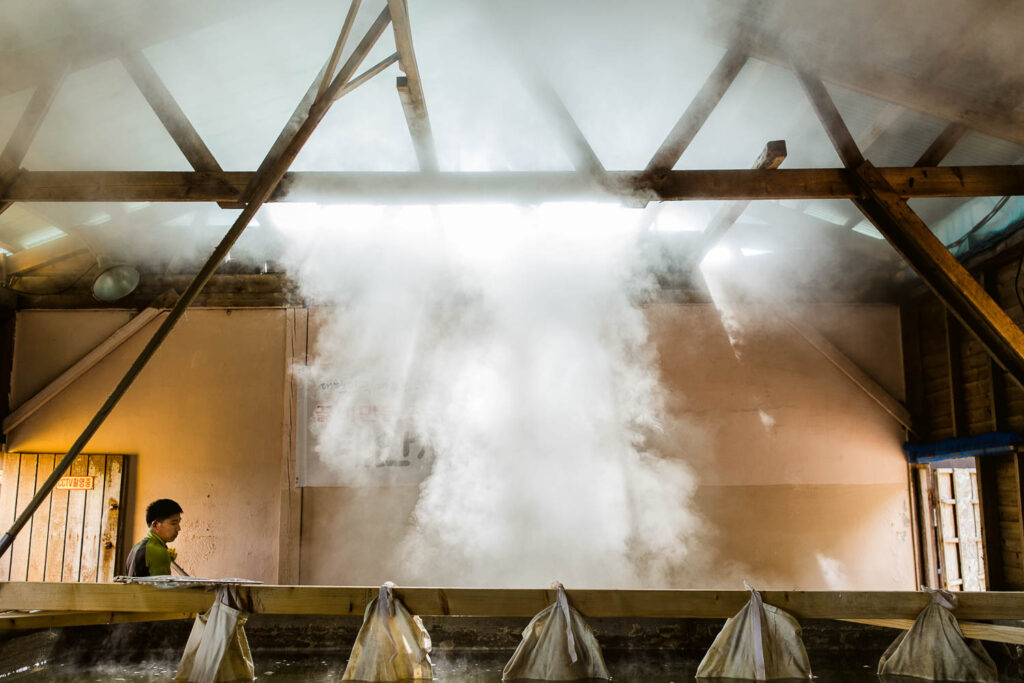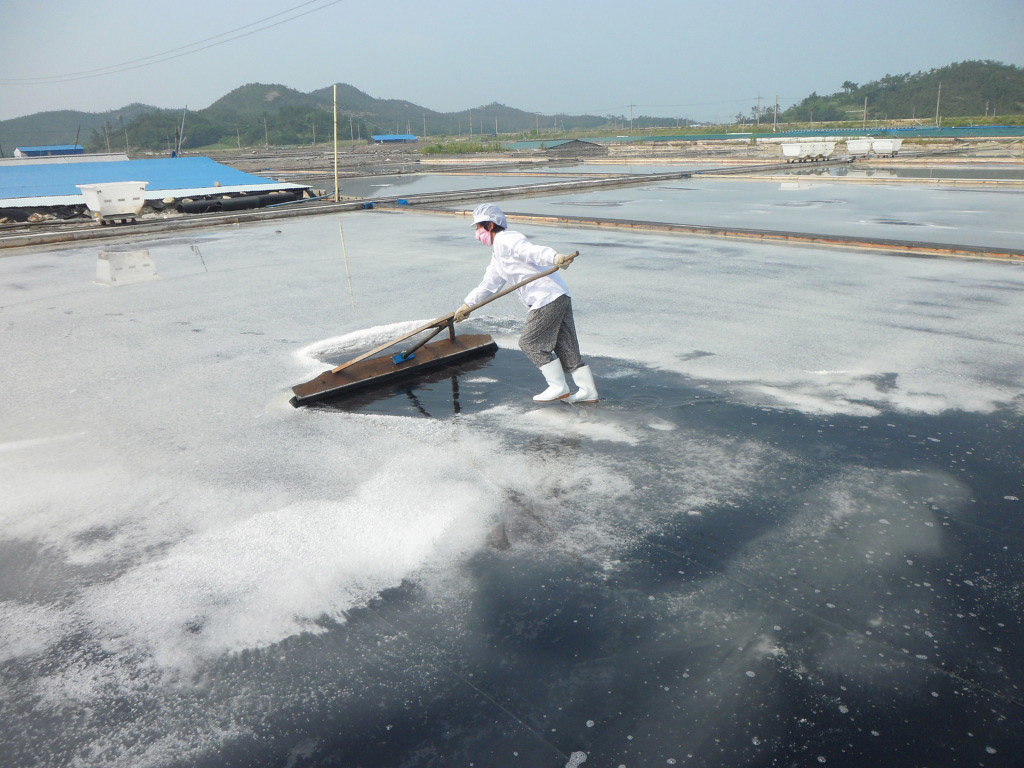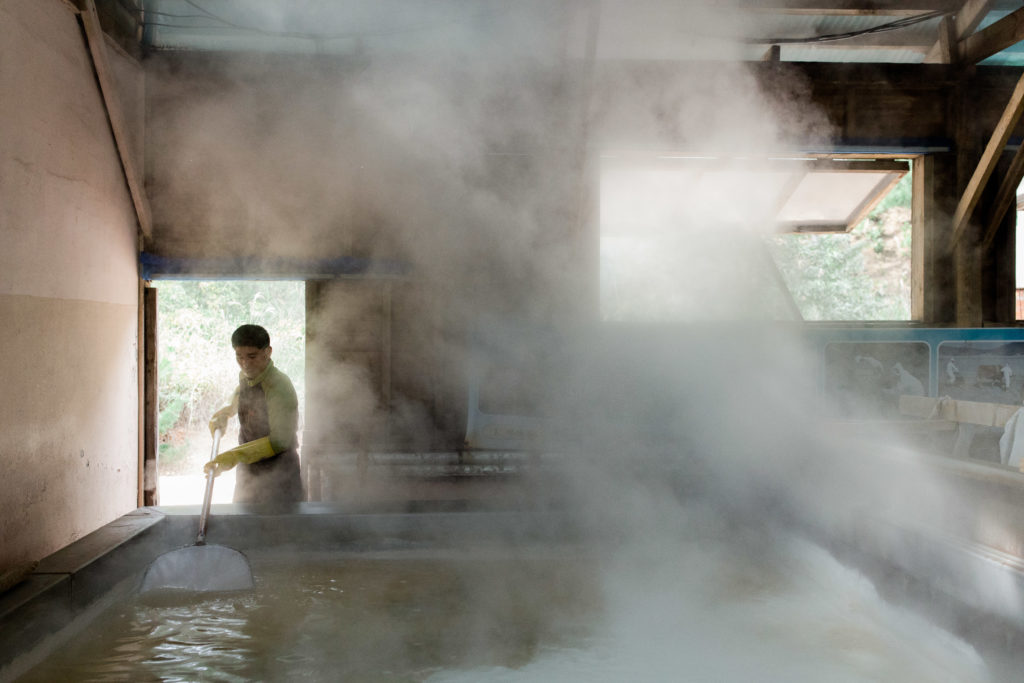Few foods hold as much historical and global significance as salt. Ancient wars have been waged in the pursuit of the mineral. During Roman times, salt was used as currency.
While no longer as valuable as gold, or reserved for the elite as in Korean ancient times, salt still holds a very special meaning to Korean food lovers and preservers of Korean food culture.

The ‘Tuscany of Korea: Disappearing Food Heritage, ‘Jayeom’’ tour by Gastro Tour Seoul gives a unique insight into the history and modern-day significance of a certain kind of Korean salt to the Korean people. It is a history, even, that many Koreans know very little about. The word ‘jayeom’ – which describes a method of salt farming unique to Korea’s west coast – is unknown even by most locals.
The jayeom method of salt farming is incredibly rare and complex, and has been passed down through generations of Koreans since the 18th century. It involves the boiling of salt water in beautifully built stone salt kilns, until a bright white and still-hot salt is produced.

Solar salt is air-baked outside, and has a short history within Korea. The solar-method of salt farming first entered Korea under Japanese colonialization in 1907. During that time, the mudflats of Juan and Bupyeong were seized and utilized for approximately half of the country’s outdoor salt production. Special salt trains were operated to transport the vast amount of salt produced there.
Due to the sheer size of the commercialization of solar salt production in Korea at this time, the number of Korean traditional jayeom salt farms began to rapidly decrease.
Korea’s traditional jayeom salt farms took a further hit after the establishment of the Republic of Korea in the year 1960. Many of the tidal flats disappeared due to re-development, and wood sources in the areas also began to disappear.

A few jayeom salt farms, however, survived, and, in 2001, something miraculous happened. A large tidal flat in Taean County, that had spent around 40 years blocked by a reclamation project, naturally reappeared. It is the only tidal flat in Korea that takes a whole seven days to fill back up with seawater after draining out, making it perfect for jayeom salt farming. Since 2001, the mudflats of Korea and jayeom salt have become reunited once again.
While common salt production involves drying of salt water to create salt, jayeom salt production sees the collection and processing of extracts of the seabed itself. In this way, many of the extraordinary nutrients and minerals from the soil are preserved.
To harvest salt the jayeom way, special contraptions are built into circular holes in the tidal flats. When the tide comes in, water is collected in a special barrel right in the heart of the underground contraption.
While the tide is out, farmers increase the salinity of the soil within the contraption by removing it, air drying it, and then pushing it back into the ground.
This increases the salinity of the contents of the contraption: this water has a salinity of around 13 – 15 degrees, while general seawater has a salinity level of around 3 – 3.5 degrees.
On this mudflat in Taean, once the tide has gone out, it remains out for 7 days. During this time, the weather must be continually dry and sunny so that the soil can dry correctly. The surface of the mudflat becomes a shiny, white color – this is all the salt!
At the end of the seven days, pockets of soil and some sea water is collected and brought to the salt farm. The soil is stored and continually dried outside, before being brought inside to be boiled with the seawater to create the final salt product.
The jayeom boiling room itself is really quite special. Steam fills the room with the special scent of the salt kilns. The boiling water is stirred and scraped continuously until entirely evaporated, to insure soft and pure white salt.
Because it is so special, jayeom salt from the Taean region is 60 times more expensive than regular salt in Korea. It’s taste, however, is incomparable. It is less harsh than commercially produced salt, and with a snowflake-like appearance and texture.
You can experience this once-in-a-lifetime trip for true food-culture lovers, on our ‘Tuscany of Korea; Disappearing Food Heritage ‘Jayeom’’ Tour.
